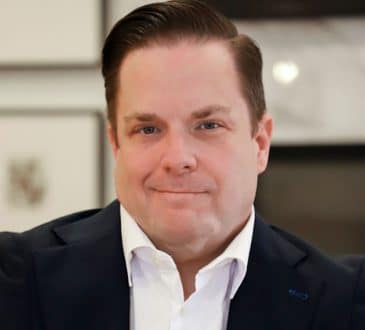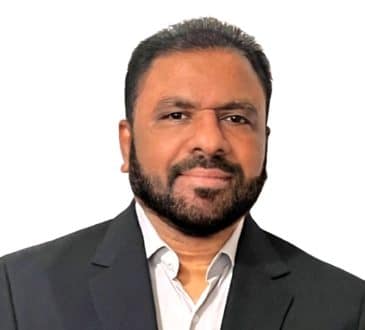You’re Likely Overlooking This Fundamental Leadership Skill: Sustainable Ambition

What if the most fundamental leadership skill isn’t strategic vision or operational excellence, but the ability to sustain your ambition without burning out?
A recent Deloitte and Workplace Intelligence study revealed that 70% of C-suite leaders were seriously considering quitting to find roles that better supported their well-being. Meanwhile, emerging talent increasingly avoids leadership paths, seeing the toll on current executives.
In our present business environment—characterized by uncertainty, disruption, and evolving stakeholder expectations—the pressure to perform has never been higher.
The Challenge for Executives
C-suite leaders face specific pressures that complicate sustainable performance:
First, you carry ultimate responsibility for organizational outcomes, with stakeholders scrutinizing your decisions and results. Second, you navigate competing expectations from various stakeholders, both at work and at home—each with different definitions of success. Third, your behavior sets the tone for the entire organization—when you work late nights or skip vacations, these patterns cascade throughout your company.
Traditional work-life balance advice falls flat because it doesn’t address these realities. The real challenge isn’t finding balance but managing tensions between what you need to accomplish across professional and personal demands and your finite capacity and energy.
The Sustainable Ambition Approach
After researching success, ambition, and well-being while working with leaders navigating these challenges, I’ve developed an approach called “Sustainable Ambition.” This isn’t another productivity system or time management technique, but a practical method for pursuing ambitious goals while preserving well-being—one you can return to whenever you need to recalibrate toward sustainability.
The approach connects three interconnected pillars:
Right Ambition: Connecting to personally meaningful and motivating goals rather than exclusively pursuing external metrics of success to motivate your effort.
Right Time: Making courageous choices about what matters most in your current life and work arc, rather than trying to pursue all ambitions and goals simultaneously, to focus your effort.
Right Effort: Being discerning about where to invest your limited energy and how to build resilience for the long term to manage your effort.
This approach applies as much to C-suite leaders as it does to professionals at all levels—perhaps even more so given the impact of executive decisions and behaviors.
Three Key Practices for Sustainable Executive Leadership
Practice 1: Connect to Personal Motivation and Meaning
Effective leaders ground their work in personal meaning rather than external metrics alone. Research shows that we have more motivation, energy, and engagement in our work when we have a clear sense of purpose. It also shows that we’re better able to prioritize and direct our limited time and effort.
An executive leader I worked with discovered connecting to a deeper motivation—empowering others to reach their potential—alongside delivering business results increased her satisfaction and fulfillment from her role, while also reducing stress. This purpose-driven approach enabled her to show up more energized and inspiring for her team.
Practical technique: Identify how you can make an impact that aligns with both your leadership role and what personally matters to you. Use these insights to reshape how you communicate your vision and approach your responsibilities.
Practice 2: Strategic Prioritization and Pacing
Consider former New Zealand Prime Minister Jacinda Ardern, who became one of the youngest prime ministers in her country’s history at age thirty-seven. Despite winning reelection twice and being recognized for her outstanding leadership, in early 2023 she made the surprising decision to step down.
“We give all that we can, for as long as we can, and then it’s time,” she explained, acknowledging she hadn’t been able to rebuild her reserves over the summer despite trying. Ardern made a courageous choice for herself, her family, and her country in stepping away from the role—not abandoning ambition but redirecting it toward what mattered most at that time in her life.
Practical technique: You don’t have to step down from your role like Ardern to find sustainability. Instead get clear on what requires your attention across professional demands and personal life right now. Get fiercely focused, thinking in periods and arcs rather than trying to accomplish everything simultaneously. Consider: Where can you schedule your most important personal priorities? Where can you subtract commitments, postpone initiatives, or delegate responsibilities to create space for what matters most to you?
Practice 3: Resilience Building
Presidential historian Doris Kearns Goodwin has said that “the most underappreciated leadership strength is the ability to relax and replenish energy.” She observed how presidents like Abraham Lincoln, Theodore Roosevelt, and Franklin Delano Roosevelt built recovery practices into their routines despite leading during national crises. Lincoln attended theater performances, Roosevelt exercised two hours every afternoon, and FDR hosted cocktail parties during World War II and strategically took time away.
If presidents bearing the weight of national affairs can prioritize restorative activities, certainly corporate executives can develop similar practices.
Practical technique: Identify activities you enjoy that allow your brain to fully disengage from work challenges—whether physical (exercise, sports), creative (music, art), or social (meaningful connection with others). Schedule these activities as non-negotiable appointments in your calendar and protect them with the same rigor you would a board meeting.
The Leadership Shadow Effect
Goldman Sachs defined the term “Leadership Shadow” to describe the impact of your leadership based on what you say, how you act, what you prioritize, and what you measure. This suggests that your relationship with ambition and how you think about well-being casts a shadow throughout your organization.
Leadership behaviors, including work patterns and well-being practices, cascade down. Teams mirror their leaders’ habits, and when leaders prioritize sustainable practices, employees understand they have permission to do the same. Conversely, when leaders say one thing about well-being but demonstrate burnout behaviors, they erode trust and reinforce unsustainable norms.
Implementing Sustainable Ambition Organization-Wide
To extend Sustainable Ambition beyond personal practice, consider:
- Audit organizational signals: Examine what behaviors your company actually rewards versus what it claims to value.
- Align recognition with sustainable performance: Recognize achievements accomplished through sustainable means, not just results regardless of cost to well-being.
- Create explicit permission: Establish clear norms about when employees are supposed to be available for work like email expectations, meeting schedules, and time for recovery and restoration.
- Build team resilience practices: Train people managers to conduct regular team reflections on workload, priorities, and sustainability.
The Competitive Advantage of Sustainable Leadership
In uncertain times, organizations need leaders who can maintain clarity, adaptability, and stamina. Sustainable Ambition isn’t a concession to weakness—it’s a strategic advantage enabling longer-term high performance.
Your first step toward Sustainable Ambition can be simple: Remind yourself why your role is meaningful; subtract one energy-draining activity or postpone a priority; and schedule time this week for an activity that takes your mind off professional demands.
These small acts build the muscle for larger shifts in how you direct your ambitions. The ability to pursue ambitious goals while preserving your well-being isn’t just good for you—it’s essential for your organization’s long-term success.
Written by Kathy Oneto.
Have you read?
The World’s Best Medical Schools.
The World’s Best Universities.
The World’s Best International High Schools.
The World’s Best Business Schools.
The World’s Best Fashion Schools.
The World’s Best Hospitality And Hotel Management Schools.
Bring the best of the CEOWORLD magazine's global journalism to audiences in the United States and around the world. - Add CEOWORLD magazine to your Google News feed.
Follow CEOWORLD magazine headlines on: Google News, LinkedIn, Twitter, and Facebook.
Copyright 2025 The CEOWORLD magazine. All rights reserved. This material (and any extract from it) must not be copied, redistributed or placed on any website, without CEOWORLD magazine' prior written consent. For media queries, please contact: info@ceoworld.biz








